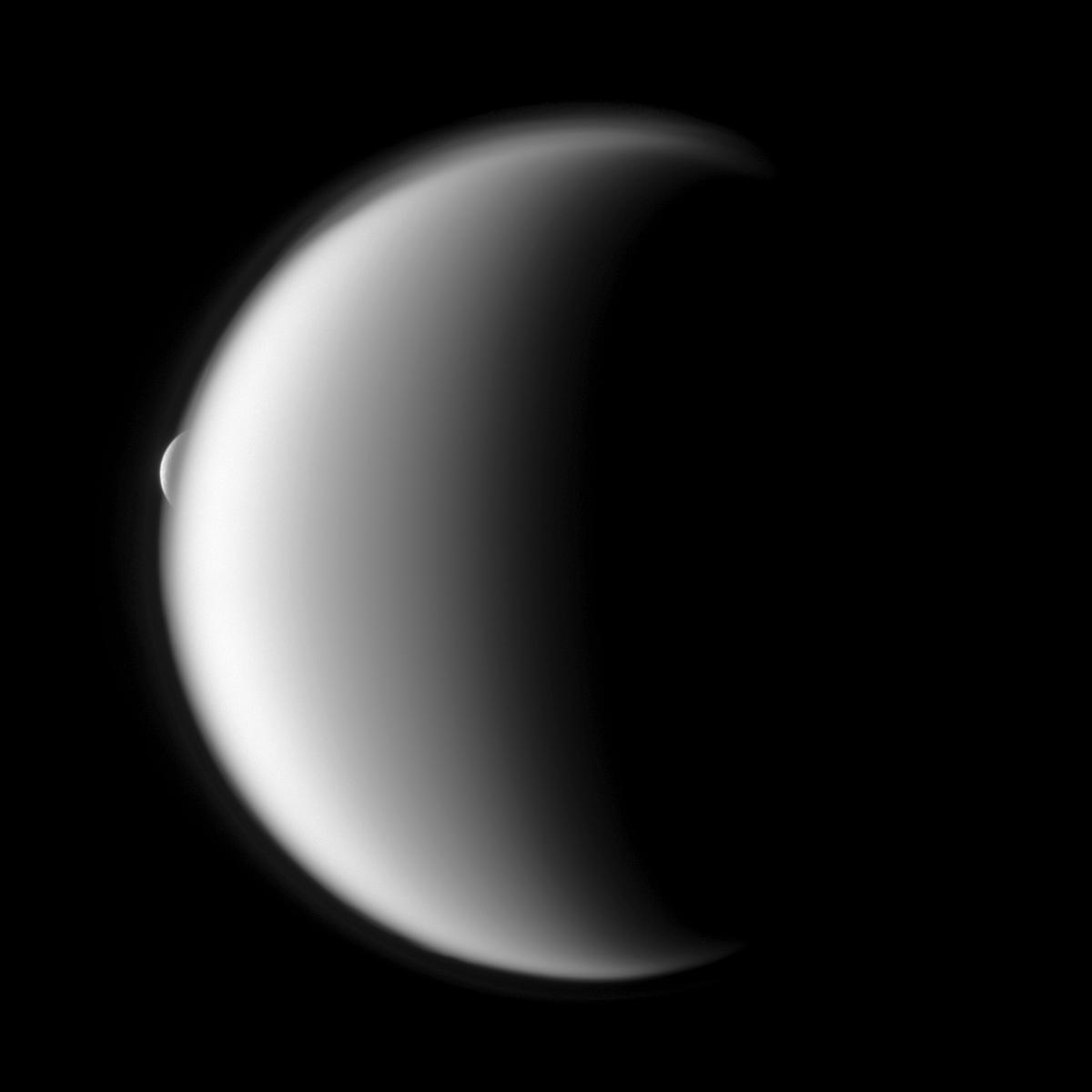Reappearing Rhea

| PIA Number | PIA12515 |
|---|---|
| Language |
|
Rhea emerges after being occulted by the larger moon Titan.
Mutual event observations such as this one, in which one moon passes close to or in front of another, help scientists refine their understanding of the orbits of Saturn's moons. Titan is about 1 million kilometers (621,000 miles) from Cassini in this image. Rhea is about 2.3 million kilometers (1.4 million miles) from Cassini.
The high altitude detached haze layer of Titan's atmosphere is clearly visible in the image. See Titan's Halo to learn more.
Lit terrain seen here is on the trailing hemispheres of Titan (5,150 kilometers, or 3,200 miles across) and Rhea (1,528 kilometers, or 949 miles across). The image was taken in visible light with the Cassini spacecraft narrow-angle camera on Oct. 27, 2009. Image scale is 6 kilometers (4 miles) per pixel on Titan and 14 kilometers (9 miles) per pixel on Rhea.
The Cassini-Huygens mission is a cooperative project of NASA, the European Space Agency and the Italian Space Agency. The Jet Propulsion Laboratory, a division of the California Institute of Technology in Pasadena, manages the mission for NASA's Science Mission Directorate, Washington, D.C. The Cassini orbiter and its two onboard cameras were designed, developed and assembled at JPL. The imaging operations center is based at the Space Science Institute in Boulder, Colo.
For more information about the Cassini-Huygens mission visit http://saturn.jpl.nasa.gov . The Cassini imaging team homepage is at http://ciclops.org .
Credit: NASA/JPL/Space Science Institute
